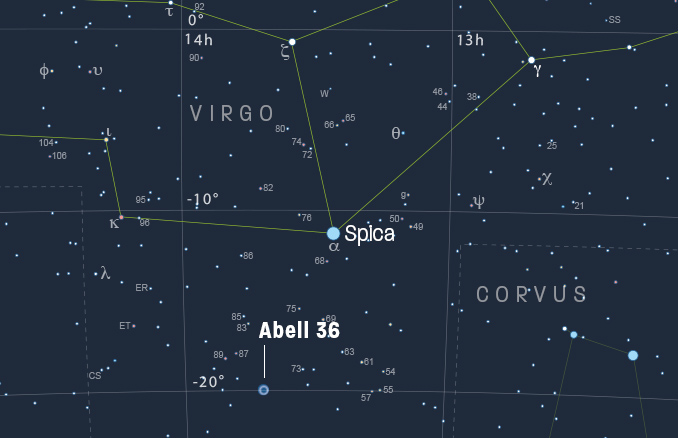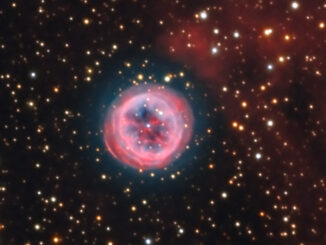Leo 1: lurking in Regulus’ glare
Local Group member Leo 1 is a dwarf spheroidal galaxy that’s a distant satellite of our own Milky Way Galaxy. It’s one of a number of observing challenges that Leo offers up, though it presents unique difficulties. The southern extremities of the soft glow from its 9.8’ x 7.4’ form lies a mere 12’ from Leo’s luminary.
Though it’s catalogued magnitude of +9.8 appears pretty favourable, its surface brightness, a more reliable measure of its visibility, is a much more discouraging fifteenth-magnitude. When you couple this with Regulus’ overwhelming glare, it’s likely you’ll need the light grasp of a telescopic aperture in the 400mm (16-inch) class. At least finding Leo 1 shouldn’t be a problem.
To maximise your chance of seeing Leo 1, wait for a transparent and moonless night from an observing site free from major light pollution; forget it if there’s thin cloud or hazy conditions. Once you’re pointing just north of Regulus, switch to a high-powered eyepiece. If you’ve inadvertently looked at Regulus, wait until you’re dark-adapted before attempting any observations.
At the beginning of April, Regulus is an hour or so from culminating when twilight has faded by 9.30pm. It lies at a favourable elevation 50° or so. However, new Moon occurs on 20 April, so it will be beneficial to hold fire on your search for Leo 1 until the Moon is out of the evening sky.
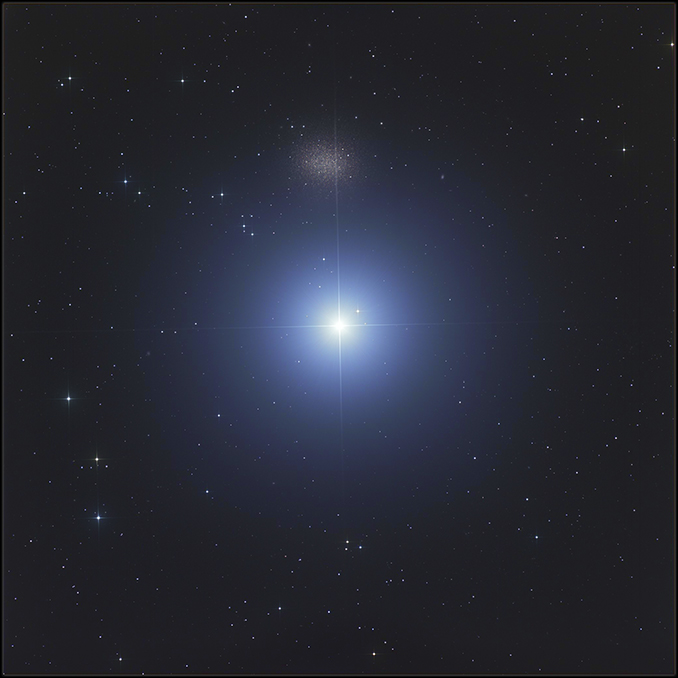
Leo 1 (PGC 29488)
RA:10h 08m 27s
DEC: +12° 18’ 24”
MAG: +9.8
SIZE: 9.8’ x 7.4’
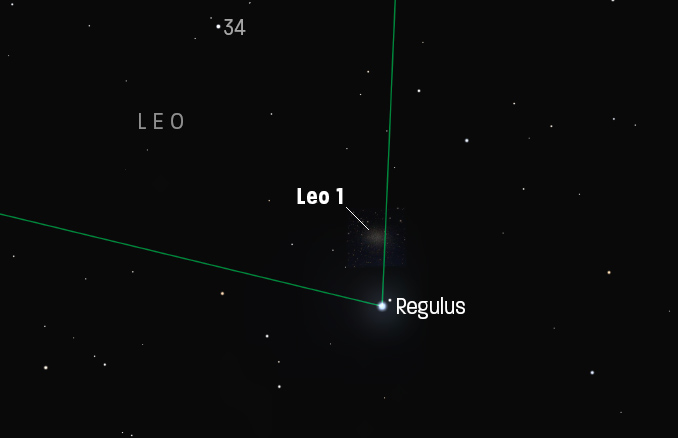
57 Cancri: a double str test
57 Cancri is a triple star, with the main pair separated by a challenging 1.5”, However, the component magnitudes of +6.1 and +6.4 make them an ideal test for a three-inch (80mm) refractor to split operating at high powers on nights of good seeing. A third star shining at magnitude +9.2 lies a distant 54” to the south west of the main pair. All the stars are gravitationally bound and are white in colour.
In early April Cancer straddles the southern meridian at 8.30pm BST, before the sky is dry enough to observe. By an hour later you’ll as set, with 57 Cancri, lying in the far northern reaches of the constellation, lying over 60° high.
Once you’ve observed 57 Cancri, why not nudge your telescope just 2.5’ to the south-west to land on iota Cancri, a truly glorious target that’s probably the late winter or early spring’s finest colour-contrast double. The orange- yellow primary shines at magnitude +4.2 and has 30” of celestial real estate between it and a pale blue magnitude +6 companion to the north-west.
57 Cancri
RA: 08h 54m 14s
DEC: +30° 34’45”
MAG: +6.1 & +6.4
SEP: 1.5”
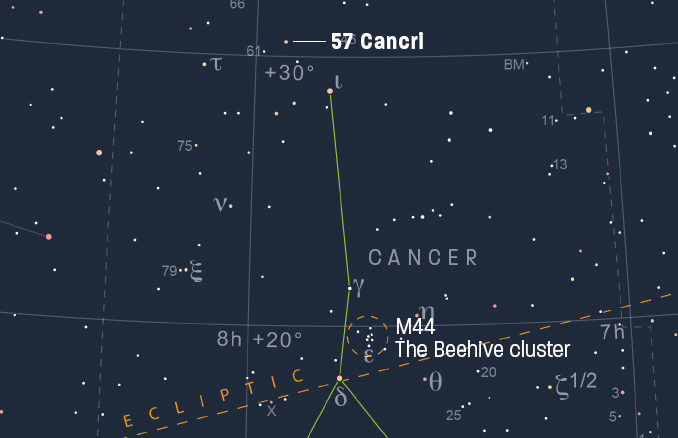
Cosmological catch!: The Twin or Double Quasar
Lurking in the vicinity of NGC 3079, the fine edge-on galaxy, is the fascinating Twin or Double Quasar. This object lies at a mind-boggling distance of nine billion light years, yet it can be seen through the largest amateur telescopes and imaged comfortably with more modest apertures!
Officially designated as Q0957+561A/B, the radio-loud quasar 0957+561 has been split into two almost identical, magnitude +16 components separated by a mere six arcseconds. Discovered in 1979, it was the first example of a gravitational lens in action; YGKOW G1 is a huge type-cD elliptical galaxy that lies four billion light years from us and directly in our line of sight. Its monumental mass has bent the light from the distant quasar.
A successful detection of the Twin Quasar has been reported in the UK from a 450mm (18-inch) telescope. About 14’ north-north-west of NGC 3079 lies a parallelogram of fourteenth- to fifthteenth-magnitude stars spanning 1.5 arcminutes, with the magnitude +14.6 star GSC 003817-001188 marking its north-western corner (precise position is RA 10h 01m 28s, DEC +55° 53’ 28”). The Twin Quasar lies an arcminute north-west of this star; images should reveal two closely-lying and almost precisely north to south-orientated magnitude +16.7 points of light.
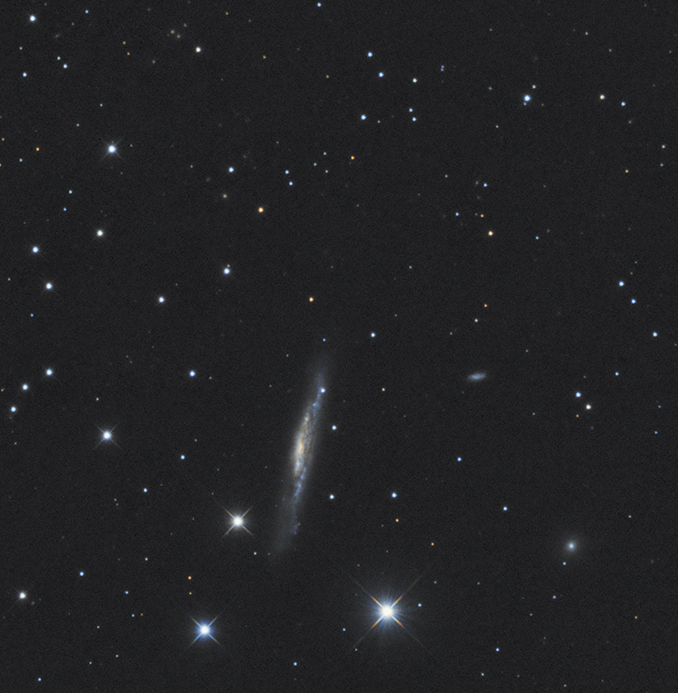
Q0957+561A/B
RA: 10h 01m 21s
DEC: +55° 53’ 50”
MAG: +16.7
SEP: 6”

Globular cluster Palomar 4
Lurking 3.5 degrees south-east of Xi Ursae Majoris is the extremely challenging and remote globular cluster Palomar 4, one of 15 such clusters discovered at Palomar Observatory in the late 1940’s and 1950s.
Originally thought to be a Local Group galaxy, Palomar 4 is in fact a giant globular cluster lying 356,000 light years away, giving it the distinction of being the second most remote globular known, behind Arp Medore 1 in Horologium, which is almost 400,000 light years distant. To put this into some perspective the Large Magellanic Cloud (LMC), found in the southern constellation of Dorado, is a ‘mere’ 160,000 light years away. The most well-known distant globular, NGC 2419 in Lynx, commonly referred to as the ‘Intergalactic Wanderer’, lies 300,000 light years away. Palomar 4 also lies 364,000 light years from the galactic centre in the extreme outer halo of the Milky Way.
Unless your site is very dark and the night moonless and transparent it’s not worth searching for Palomar 4. Shining feebly with an integrated magnitude of +14.2 across an apparent diameter of just 1.3’ Astronomy Now’s deep-sky expert Owen Brazell recommends a 400-500mm (16-20-inch) telescope for a visual detection. Even then don’t expect to resolve its individual stars, the brightest of which are 18th magnitude.
Palomar 4 is unusual in that its age of 10-11 million light years makes it much younger than many of the typical inner-halo clusters and it’s sufficiently massive to be compared to our galaxies ultra-faint dwarf or spheroid satellite galaxies.
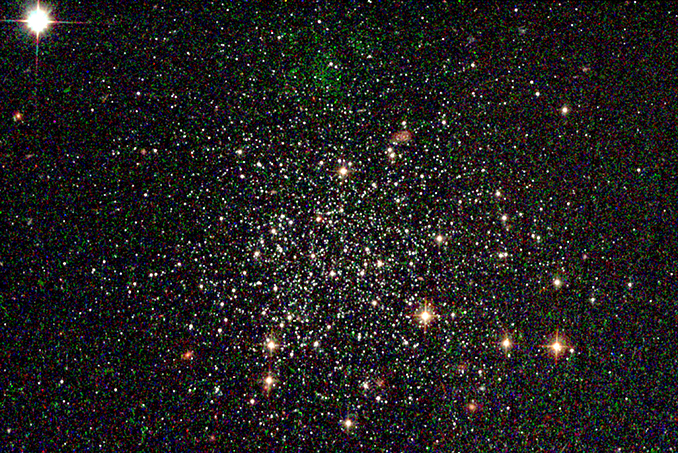
Palomar 4
RA: 11h 29m 16s
DEC: +28° 58’ 25”
MAG: +14.2
SIZE: 1.3’
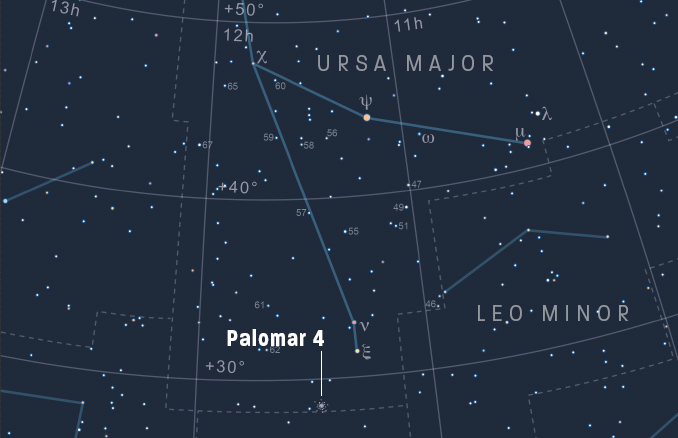
Abell 36: a large and challenging planetary
Abell 36 (PK 318+41.1) in Virgo is a large, faint and diffuse planetary nebula with an entry in George Abell’s very popular catalogue of challenging planetary nebulae, which he put together in the 1950s following scrutiny of the Palomar Observatory Sky Survey plates.
Its declination of almost 20°south means that from UK shores Abell 36 achieves at best an elevation of around 20° when it culminates. At the start of April from London, this occurs at about 2am BST (01:00 UT). Abell 36 shines at magnitude +11.8 across its 8’ x 5’ north–south orientated form, while its central star shines unusually brightly at eleventh-magnitude. It lies nearly 10° south-east of Spica; magnitude +6 star 73 Virginis (HIP 66015) lies along the way, 2.3° to the north-west of Abell 36.
Owing to its inherently difficult characteristics and less than helpful positioning in UK skies, don’t even bother to attempt to track this one down from a light-polluted site or at a superior site on a hazy or moonlit night. Under cooperating observing circumstances from more southerly climes, Abell 36 can be faintly detected as a 2’ glow through a 200mm (eight-inch) telescope operating with an O-III or UHC filter and at low powers. If you’re blessed with a dark sky, have a crack at it through a 250–300mm (ten- to twelve-inch) telescope and a UHC filter.
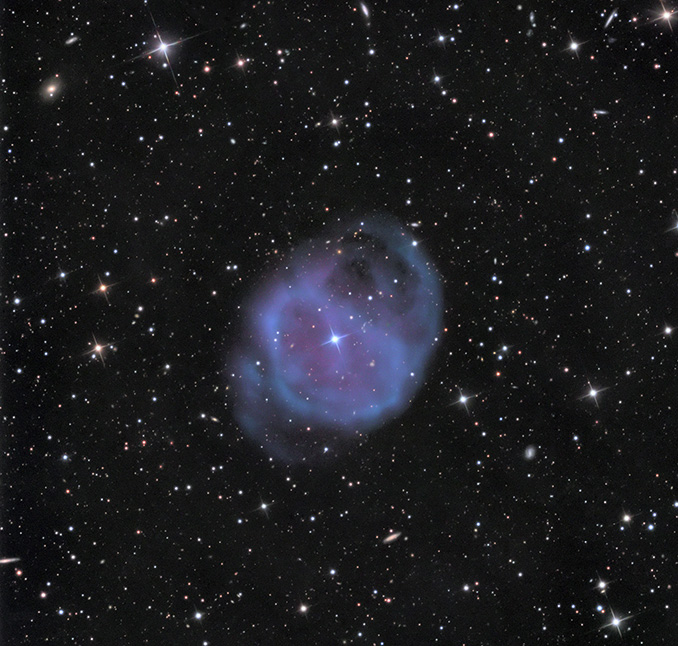
Abell 36 (PK 318+41.1)
RA: 13h 40m 41s
DEC: –19° 52’ 57”
MAG: +11.8
SIZE: 8’ x 5’
